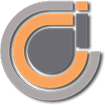I am asked often what my process is when helping solve problems for leaders and organizations. I don’t have an immediate answer, as part of my process is organic and determined by the challenge and context at-hand. I believe that fluidity and nimbleness are key to respond and innovate in the best way possible given the situation.
With that in mind, there are some key attributes to my process that I always use. In your own work, I share my strategy here not to say, “use this,” but to really turn the question back on you and your self-awareness, asking, “what’s your idea generating and problem solving process?”
- Resources
I have reviewed and written about these books on several occasions, but I think it’s pertinent to keep a few favored texts as a reference point to remind you of your process. For me, “essentialism” by Greg McKeown, Alex Osborne’s Creative Problem Solving Model as described in “Creative Leadership,” Ken Robinson’s “Out of Our Minds,” and “Primal Leadership” by Daniel Goleman, are texts that serve as the philosophical foundation of my work.
- Skills
Sharpening the skillset that allows me to do my best work remains a focus of my process. These skills are my craft. Similar to artists and writers that accomplish prolific work by returning to their craft again and again, not necessarily awaiting that lightning bolt inspiration (craft is the muse), my skills keep me on the cutting edge of my service to my clients and my community.
What are those skills? Asking curious questions, listening deeply and discovering connections, and balancing hard work on the details of the project with the complexity of the bigger picture always in mind.
- What Else?
With those skills and resources primed in my project toolkit, I take advantage of some other approaches:
– I engage with the challenge and context fully. I try to never take an assignment or project that I can’t whole-heartedly invest my time and energy in … why try to solve a problem you can’t fully commit to solving?
– Once engaged, I wander and explore. Curious questions matter a great deal at this stage. Looking at the challenge from different perspectives, connecting the unconnected, and keeping an open mind are all fueled by the explorer’s mindset. Additionally, the exploration period asks, what’s already being done within the organization? What’s happening in both similar and different organizations or with other leaders? Where might collaboration be possible?
– I try to integrate a conversation early on about the context of success. What does success look like for you? What does it need to look like? What are the benefits and outcomes you hope to achieve? What is it you want to accomplish or learn? Success is not always about perfection but about the most viable solution.
– I brainstorm and ideate immediately and constantly, keeping a pen and journal with me at all times ensures that very few ideas slip through the cracks.
– When an idea resonates, or really feels like a potential solution, it’s time to prototype and see what happens. “Bias-to-action” continually proves effective when it is followed by critical reflection, editing, and prototyping again. I take a closer look … I go on a deep dive expedition … I seek breadth and depth about that idea.
– I work towards synthesis. Summarizing the work of a team, whether that’s after a brainstorming session or a process-oriented conversation is the first step. What really matters to people though is creating meaning and awareness of that meaning. Synthesis takes the summary of a conversation and projects it forward, offering insights about what it means and why it will matter. I offer that initial synthesis and then open the door for others to deepen on that meaning.

